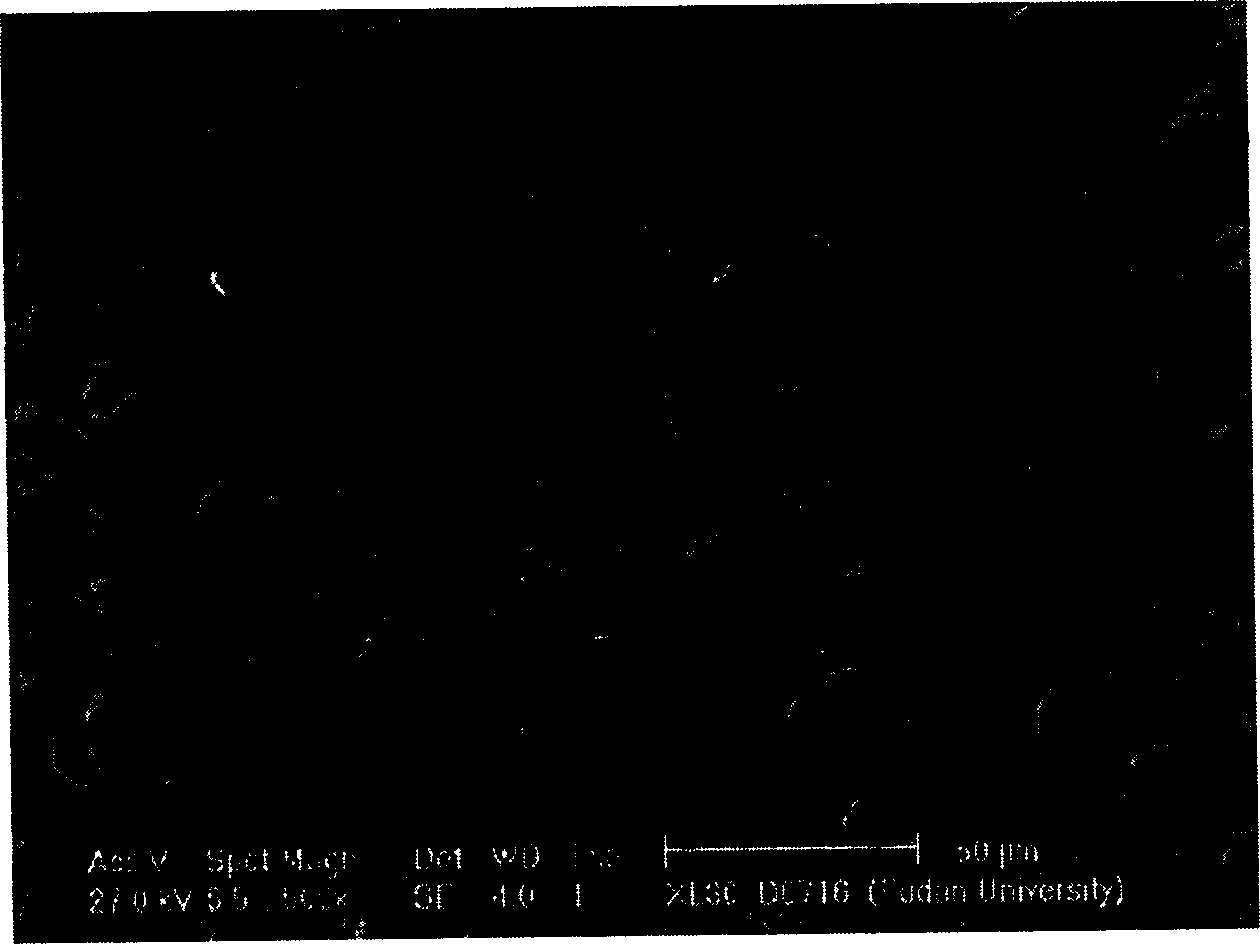Composite oxide catalyst for preparing propylene by oxidative dehydrogenation of propane and preparation method thereof
A composite oxide and oxidative dehydrogenation technology, which is applied in metal/metal oxide/metal hydroxide catalysts, physical/chemical process catalysts, hydrocarbons, etc., can solve the problems of easy deactivation of catalysts and achieve easy preparation , low price, and the effect of improving selectivity
- Summary
- Abstract
- Description
- Claims
- Application Information
AI Technical Summary
Problems solved by technology
Method used
Image
Examples
Embodiment 1
[0014] 17.3 g Ce(NO 3 ) 3 ·6H 2 O and 1.5 g Ni(NO 3 ) 2 ·6H 2 O was dissolved in 100 mL of absolute ethanol. Dissolve 7.6 grams of oxalic acid in 100 milliliters of absolute ethanol, slowly add the ethanol solution of oxalic acid into the cerium and nickel solution under vigorous stirring at room temperature, and stir for 4 hours. Then centrifuge, wash, dry overnight at 120°C, and bake at 500°C for 2 hours in an air atmosphere. The molar ratio of cerium and nickel in the prepared nanocomposite catalyst is 8:1. The reaction condition of oxidative dehydrogenation of propane to propylene is: the ratio of reaction gas is C 3 h 8 :O 2 :N 2 =16:16:68, reaction temperature 300°C, catalyst consumption 0.15g, space velocity 6000h -1 . Analysis of the reaction tail gas shows that the conversion rate of propane is 28.2%, the selectivity to propylene is 18.9%, and the yield of propylene is 5.3%.
Embodiment 2
[0016] 17.3 g Ce(NO 3 ) 3 ·6H 2 O and 2.9 g Ni(NO 3 ) 2 ·6H 2 O was dissolved in 120 ml absolute ethanol. Dissolve 7.6 grams of oxalic acid in 100 milliliters of absolute ethanol, slowly add the ethanol solution of oxalic acid into the cerium and nickel solution under vigorous stirring at room temperature, and stir for 8 hours. Then centrifuge, wash, dry overnight at 120°C, and bake at 700°C for 2 hours in an air atmosphere. The molar ratio of cerium and nickel in the prepared nanocomposite catalyst is 4:1. The reaction condition of oxidative dehydrogenation of propane to propylene is: the ratio of reaction gas is C 3 h 8 :O 2 :N 2 =16:16:68, reaction temperature 300°C, catalyst consumption 0.15g, space velocity 6000h -1 . Analysis of the reaction tail gas shows that the conversion rate of propane is 34.3%, the selectivity to propylene is 18.9%, and the yield of propylene is 6.5%.
Embodiment 3
[0018] Put 13.0 g Ce(NO 3 ) 3 ·6H 2 O and 8.7 g Ni(NO 3 ) 2 ·6H 2 O was dissolved in 120 ml absolute ethanol. Dissolve 9.8 grams of oxalic acid in 120 milliliters of absolute ethanol, slowly add the ethanol solution of oxalic acid into the cerium and nickel solution under room temperature under vigorous stirring, and stir for 4 hours. Then centrifuge, wash, dry overnight at 120°C, and bake at 600°C for 4 hours in an air atmosphere. The molar ratio of cerium and nickel in the prepared nanocomposite catalyst is 1:1. The reaction condition of oxidative dehydrogenation of propane to propylene is: the ratio of reaction gas is C 3 h 8 :O 2 :N 2 =16:16:68, reaction temperature 300°C, catalyst consumption 0.15g, space velocity 6000h -1 . Analysis of the reaction tail gas shows that the conversion rate of propane is 34.6%, the selectivity to propylene is 25.7%, and the yield of propylene is 8.9%.
PUM
 Login to View More
Login to View More Abstract
Description
Claims
Application Information
 Login to View More
Login to View More - R&D
- Intellectual Property
- Life Sciences
- Materials
- Tech Scout
- Unparalleled Data Quality
- Higher Quality Content
- 60% Fewer Hallucinations
Browse by: Latest US Patents, China's latest patents, Technical Efficacy Thesaurus, Application Domain, Technology Topic, Popular Technical Reports.
© 2025 PatSnap. All rights reserved.Legal|Privacy policy|Modern Slavery Act Transparency Statement|Sitemap|About US| Contact US: help@patsnap.com

